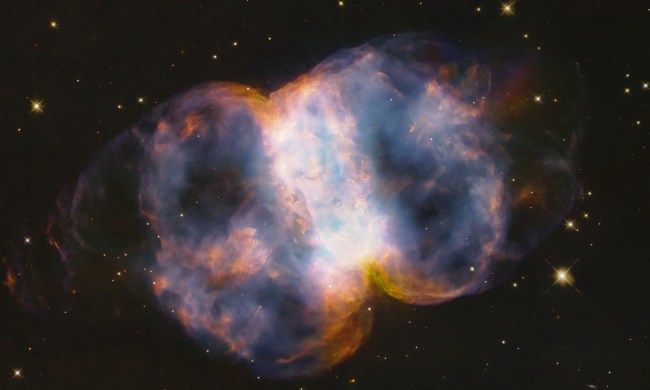The Hubble Space Telescope is a constant source of beautiful pictures of the wonders of space, and this week’s Hubble image shows a wonderful example of a phenomenon called gravitational lensing, which helps scientists see incredibly distant galaxies. It shows the galaxy SGAS J143845+145407, which appears twice as if in a mirror.
If you’ve heard of gravitational lensing recently, it’s likely because the same phenomenon was also visible in the first deep field image shared from the James Webb Space Telescope. That image showed how extremely distant galaxies were visible due to the bending of spacetime caused by the gravity of galaxy cluster SMACS 0723.

This Hubble image shows a different version of the same phenomenon. There are three types of gravitational lensing, which occurs when we look at a very massive body like a galaxy cluster that has very strong gravity that warps spacetime and bends light coming from behind it. The first type of gravitational lensing is called microlensing, when an object’s brightness is temporarily increased, and that is useful for detecting exoplanets. The second type seen in the James Webb image is called weak gravitational lensing, when the distant galaxies are seen as stretched because their light is bent by gravity.
But there’s an even more extreme version of this which happens when the foreground object is more massive or the background object is closer, which is called strong gravitational lensing. That’s what is visible in this Hubble image when gravitational lensing has caused the galaxy near the center of the image to appear mirrored, so you see two versions of it.
“Hubble has a special flair for detecting lensed galaxies,” Hubble scientists write. “The telescope’s sensitivity and crystal-clear vision let it see faint and distant gravitational lenses that ground-based telescopes cannot detect because of the blurring effect of Earth’s atmosphere. Hubble was the first telescope to resolve details within lensed images of galaxies and is capable of imaging both their shape and internal structure.”



